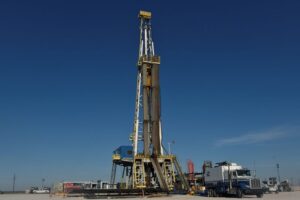The Future of U.S. Natural Gas Production: Analyzing Trends and Projections for 2025
The landscape of U.S. natural gas production is on the cusp of significant change. Analysts predict a rebound in output by 2025, driven mainly by increased demand from liquefied natural gas (LNG) export plants. This forecast comes after a challenging year marked by production cuts and historically low prices, setting the stage for a compelling narrative in U.S. energy markets.
Current Production Declines: A Temporary Setback
According to the U.S. Energy Information Administration (EIA), U.S. natural gas production is set to experience its first decline since 2020. Following peaks in production, the output is expected to decrease from a record high of 103.8 billion cubic feet per day (bcfd) in 2023 to around 103.3 bcfd in 2024. This downturn is largely attributed to a significant drop in prices at the Henry Hub, which fell to a 32-year low earlier this year. In some instances, prices have even dipped into negative territory, compelling producers to pay customers simply to offload their gas.
However, this trend isn’t forecasted to last. Analysts are optimistic that the combination of rising demand, particularly from the global LNG market, will catalyze a price recovery and an increase in production by 2025, where it is projected to reach approximately 104.5 bcfd.
The LNG Export Boom
The primary driver behind the expected increase in natural gas demand over the next few years is the growing appetite for U.S. LNG abroad. Over the period from 2019 to 2023, U.S. LNG exports surged by an average of 34% annually. With predictions showing a 14% increase in LNG exports in 2025, it is clear that international markets are turning to the U.S. for their natural gas needs.
Two new LNG facilities are set to begin operations by the end of this year, including the 1.8-bcfd phase of Venture Global’s Plaquemines facility and the 1.5-bcfd Stage 3 expansion of Cheniere Energy’s Corpus Christi facility. These developments are timely, as they align perfectly with the anticipated rise in global demand.
Expectations for Price Recovery
With increased demand comes the expectation of higher prices. Analysts forecast a significant rise in average annual prices at the Henry Hub, projecting a jump to about $3.27 per million British thermal units in 2025, a considerable rebound from the projected low of $2.29 in 2024.
This optimistic outlook is echoed by industry leaders. Thomas Jorden, CEO at Coterra Energy, emphasizes this tightening supply-demand dynamic, noting that increased LNG exports and heightened demand for electricity generation coupled with the potential for winter weather could lead to a more robust market environment for natural gas in 2025 and beyond.
Major Producers’ Adjustments: A Strategic Response
Prominent U.S. gas producers are proactively adjusting their strategies to align with these upward trends. Many companies have acknowledged that they will boost output as they brace for improved market conditions.
For instance, EQT, the nation’s second-largest gas producer, shifted its production forecast for the fourth quarter to range between 6.03 and 6.58 billion cubic feet of gas equivalent per day, up from previous estimates. Similarly, EOG Resources anticipates increasing its output from 1.745 bcfd to between 1.800 and 1.850 bcfd by the end of the fourth quarter.
Despite these optimistic forecasts, caution remains a prevalent theme. Expand Energy—formed from the merger of Chesapeake Energy and Southwestern Energy—plans to scale its output to around 7 bcfd in 2025, although this will depend on favorable market conditions.
Navigating Market Conditions: A Look Ahead
While the outlook for U.S. natural gas production is promising, uncertainties surrounding market conditions and price volatility could influence the pace and scale of production increases. As we move towards 2025, the industry must remain adaptable, continually assessing external factors that could impact both supply and demand.
Overall, as U.S. natural gas enters a new phase characterized by escalating export demand and potential price recovery, stakeholders must carefully navigate these evolving dynamics to position themselves for success. The road ahead may be fraught with challenges, but the promise of opportunity looms large in the burgeoning natural gas market.
Stay tuned for more in-depth analysis and timely updates from Extreme Investor Network, where we keep a keen eye on market trends, policy shifts, and investment opportunities in the natural gas sector.

